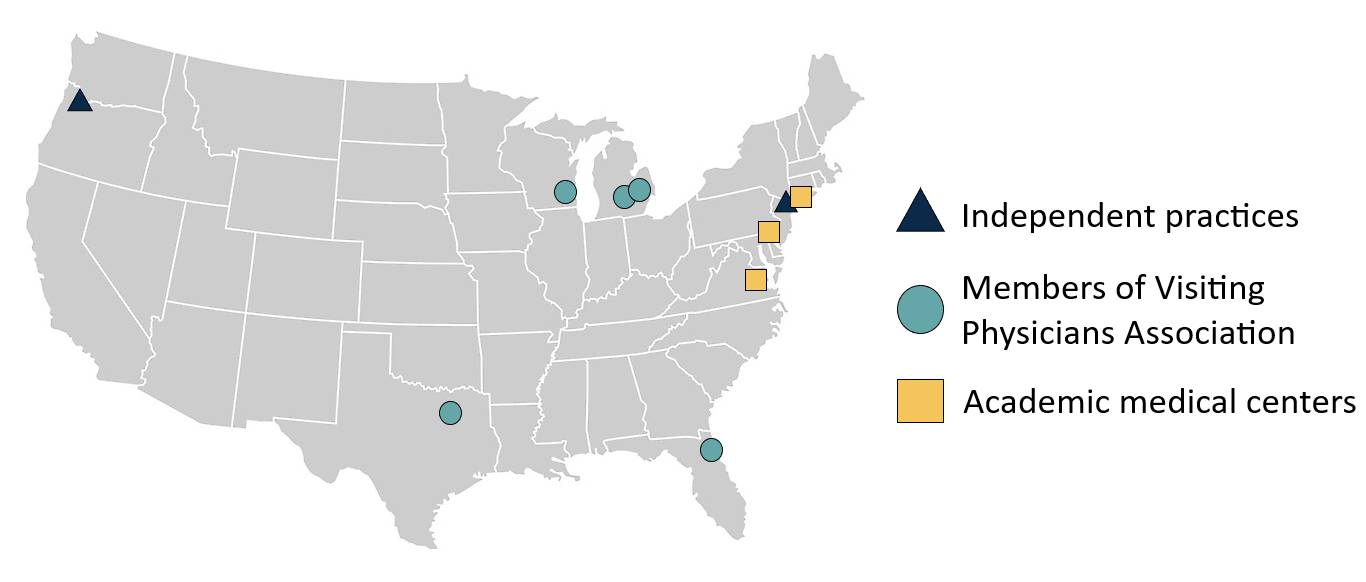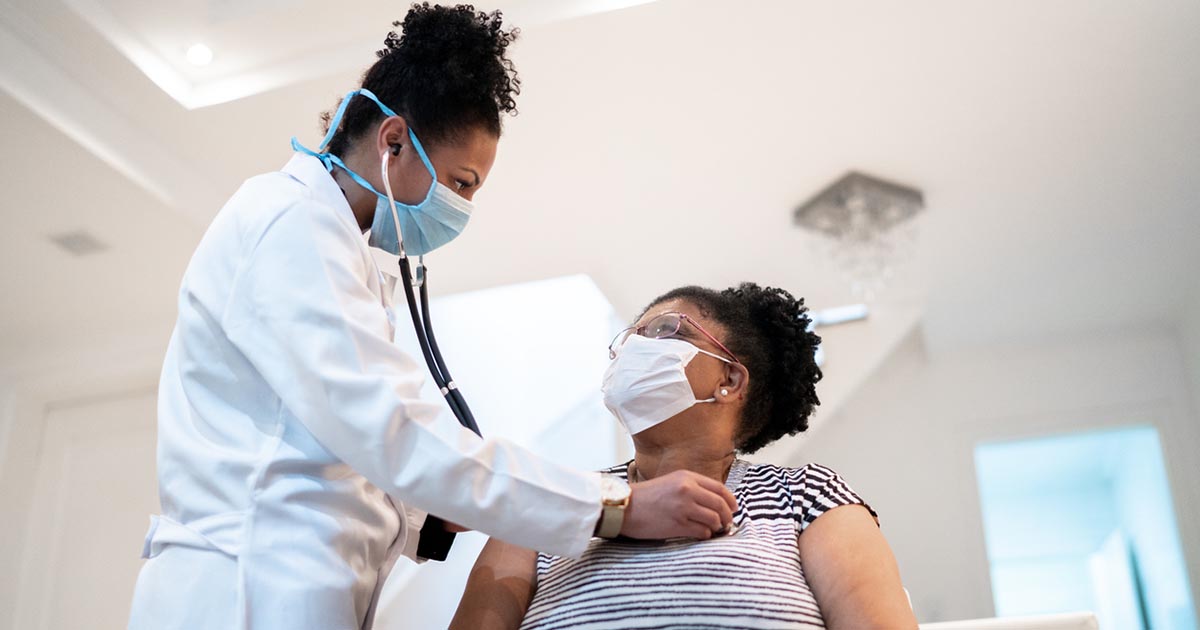A federal initiative meant to transform primary care likely reduced total monthly Medicare spending per beneficiary by a considerable amount in the first year of the COVID-19 pandemic, according to a new report from Mathematica.
The Independence at Home Demonstration (IAH), which Congress mandated in 2010 as part of the Patient Protection and Affordable Care Act, seeks to improve the provision of care to chronically ill Medicare beneficiaries who need help from another person with at least two activities of daily living (such as feeding and dressing). It tests whether providing a payment incentive to home-based primary care practices can reduce Medicare spending and improve the quality of care. In 2020, the demonstration included 10 practices in eight states serving about 5,000 eligible beneficiaries.

The 10 practices who participated in the IAH demonstration in 2020
After six years of finding relatively limited impacts, this most recent annual report from Mathematica’s ongoing evaluation of IAH showed that the demonstration might have reduced total Medicare spending in 2020, the seventh year of the demonstration and the first year of the pandemic, by an estimated $459 per beneficiary each month, or 10.7 percent. Spending fell the most for beneficiaries who needed help from another person with all or nearly all activities of daily living. Lower spending on hospital admissions partly drove the total spending reduction.
“COVID-19 increased the demand for home-based care across the health care continuum, including home-based primary care,” said Laura Kimmey, principal researcher at Mathematica and the evaluation’s project director. “Lower spending on hospitalizations could be welcome news for older patients and their families because hospitalizations can have negative consequences for older adults such as delirium and declines in functional status.”
The evaluation also found the following from the first year of the COVID-19 pandemic:
- Primary care played a larger role in IAH beneficiaries’ health care than it did for comparison beneficiaries. Frequent primary care visits might have been more valuable for attending to health needs during the pandemic than in earlier years.
- There was a larger decrease in spending on specialty care among comparison beneficiaries than among IAH beneficiaries. Poorer management of chronic conditions for the comparison group might have contributed to the effects of IAH on lower spending on hospital admissions in 2020.
This latest evidence suggests that home-based primary care might, in some cases, promote patient-centered care. In surveys conducted for the evaluation, patients of IAH practices and their caregivers reported high levels of satisfaction with home-based primary care, and most preferred receiving primary care in their home over office visits. In addition, although many of the potential benefits of home-based primary care on spending and health outcomes have yet to be realized, its use has been growing for several years, especially in assisted living facilities.
Although Mathematica’s analysis points to promising results in the seventh year of the demonstration, the true effect of IAH could have been much smaller or larger than the estimated 10.7 percent reduction. The results could not be generalized to other years or to providers outside the 10 practices that participated in the demonstration during its seventh year. More information about the demonstration is available at CMS’s website.
Contact
-
Todd Kohlhepp
tkohlhepp@mathematica-mpr.com
609-275-2200


